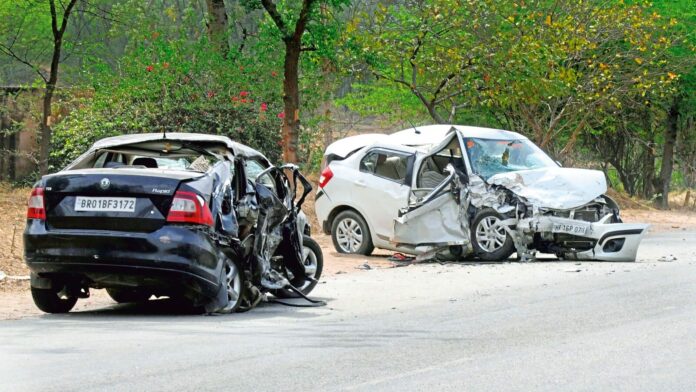The sensational Himalayan tunnel rescue operation in Silkyara, lasting 17 days, riveted the nation’s attention. The deployment of foreign experts, high-tech boring equipment and 41 ambulances (one for each of construction workers) was proof that India values human lives and will do what’s needed to prevent fatalities. It is surprising that the death of more than ten times that number every day on Indian roads is not being addressed with the same alacrity.
Ever since the National Highways Development Programme was launched in 1998, ministers for road transport have committed themselves to dramatically reducing road accidents and fatalities, some even announcing impressive timelines. However, the ground reality belies that aspiration. Timelines have often been extended.
As per Road Accidents in India: 2022, published by the ministry of road transport and highways, the number of fatalities in 2022 rose to 168,000 from about 150,000 the previous year. A World Bank press release of June 2022 states that India loses more than 5% of its GDP to road accidents and related fatalities.
More than 80% of those suffering road mishaps are in the productive age group. Globally, India has the highest fatalities. According to the World Health Organization, despite having only 1% of the world’s vehicles, India accounts for almost 11% of all crash-related-deaths. Such a death occurs every three minutes. In contrast, China has roughly the same population but just one-third the road fatalities.
A common misconception is that accidents occur because of bad roads. But, both in terms of quality and the length of expressways and highways, we have seen a significant enhancement in India. In fact, the better the roads, the higher the speed at which vehicles can travel, which can result in recklessness. With as many as 500 individuals losing their lives daily on our highways, there is an urgent need for a more strategic approach to secure Indian lives.
The government has introduced measures like steep penalties and prison sentences for traffic violations under the Motor Vehicles Act and Bharatiya Nyaya Sanhita. A committee for road safety was also set up, headed by a retired Supreme Court judge. However, as vehicles continue to proliferate, road accidents look likely to increase. The emphasis so far has been on accident reduction, and this has borne some positive results. It is now time to focus on fatality prevention.
Currently, once an accident occurs, the injured are taken by ambulance to the nearest hospital. Reports suggest that half of those killed could not get appropriate medical assistance in the ‘golden hour’; trauma care emergency services are not always available along national highways. Lapses in terms of time taken for evacuation and quality of treatment are responsible for most of India’s high fatalities.
In some states in the US, the police have integrated helicopter-based traffic surveillance with medical evacuation procedures. Pilots are trained as rescue specialists and paramedics are kept on standby in accordance with accident density patterns and their analysis. Equipped with requisite medical equipment and medicines for immediate stabilization, helicopters are located at an airport from where they can cover a defined radius of highways.
A Johns Hopkins study of 2012 concluded that, adjusting for such factors as injury severity, type of injury and patients’ age, mishap victims taken to hospital by air are much more likely to survive than those transported by ground.
For severely injured patients, delayed control of bleeding is the leading cause of death. To prevent this, a trained team of paramedics should reach the accident site on a signal from a control centre to conduct a ‘stay and play’ exercise to stabilize victims first. Thereupon, they should be transported to trauma care units or more advanced medical centres in well equipped ambulances or air-ambulances.
Improved and timely medical intervention, thanks to life- saving medical equipment and trained medical professionals on board, can enhance survival chances. Recipient trauma hospitals with critical care super-specialities should be pre-identified and have suitable landing facilities. These provisions can make that slender but winning difference to human lives.
The Madhya Pradesh government has initiated such an emergency service as a pioneering effort. The central government should define the protocols and standard operating procedures for undertaking such measures in a systemic, meaningful and coordinated manner across the country.
We also need to find a way of recovering the cost of such emergency services through innovative insurance products for those who can afford to pay for these, and by linking the plan with Ayushman Bharat and other welfare schemes for those who cannot. Efforts in this direction are reported to have begun.
In reality, the cost of road accidents is borne not only by victims and their families, but by the entire economy. With the Union budget for this fiscal year yet to be unveiled, we should consider allocating a tiny fraction of our enormous road-building outlay to reversing the trend on road fatalities. This is a national imperative.
#mobilize #resources #reduce #road #fatalities #India
